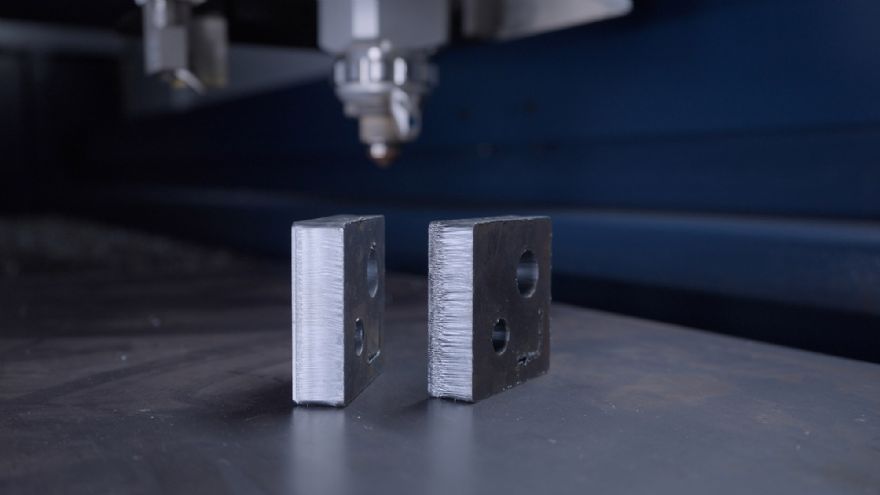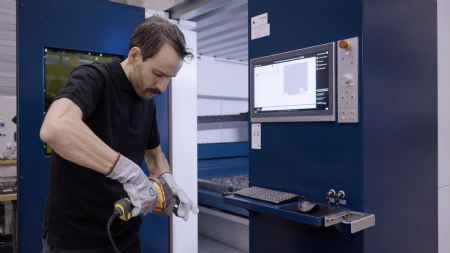
At its recent in-house
INTECH trade fair held at the beginning of April,
Trumpf showcased its ‘Cutting Assistant’, an application which uses artificial intelligence (AI) to improve the quality of laser-cut edges. To use it, production staff take a picture of their part’s cut edge with a hand scanner.
The solution then assesses edge quality by evaluating for objective criteria such as burr formation. With this information, the Cutting Assistant's optimisation algorithm suggests improved parameters for the cutting process. The machine then cuts the sheet metal once more. If the quality still does not meet expectations, the user has the option to repeat the process.
Trumpf product manager Louisa Peters said: “With the Cutting Assistant, Trumpf is once again demonstrating that we are a pioneer in the use of AI in industrial manufacturing. Users aren’t just empowered to combat the skilled worker shortage, they are also able to save time and money. This gives them a competitive edge when it comes to productivity.”
The high-tech company offers this solution for all TruLaser series featuring a power output of 6kW or more. Most owners who are already in possession of Trumpf machines should be able to simply download the Cutting Assistant.

During laser cutting, users often have difficulty determining the correct parameters for their material grades. Materials which are not optimised for laser cutting often produce edges with wide variations in cut quality, forcing production employees to constantly change the technology parameters. This entails adjusting each individual parameter one by one — a process which demands a lot of time and skill.
This presents challenges for many companies, especially those with inexperienced workers in production positions. By integrating the Cutting Assistant into the machine software, optimised parameters can be transferred seamlessly into the software without the need for programming which saves time and reduces errors.
Trumpf engineers have cut thousands of parts while developing the Cutting Assistant, using their extensive knowledge to train the software’s algorithm, and the work continues. In the future, data from applications in the field will also be incorporated into the solution. This will enable faster and more reliable results, as the self-learning system will continuously improve. Through all of this, Trumpf ensures that the algorithm does not distribute the user’s expertise.
Mr Peters concluded: “Manufacturers and users alike benefit from this novel development approach, and course, data security remains a top priority. Furthermore, Trumpf regularly provides users with online updates that they can download to their machines.”